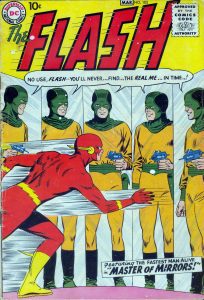 Today we take a look at a major DC Key that I think is a bit overblown in the Overstreet price guide. I may be alone here on this one. The book is a certified silver age key – no denying that. The Flash was the first golden age superhero character to reboot, and later the first hero to start being published in his own series in the silver age of comics.
Today we take a look at a major DC Key that I think is a bit overblown in the Overstreet price guide. I may be alone here on this one. The book is a certified silver age key – no denying that. The Flash was the first golden age superhero character to reboot, and later the first hero to start being published in his own series in the silver age of comics.
Flash #105, DC Comics, March 1959.
Overstreet and the marketplace are in lock-step on this book, values increasing and demand is maybe at an all-time high. An ongoing successful TV series and movie appearances on the way. What more could you want?
I personally see Flash #105 as an over-heated and currently over-hyped book, much in the same way as I do with previous posts on Iron Man #1 and Silver Surfer #1. The book itself doesn’t really bring that much to the table. It is currently the 3rd highest valued/ high grade Flash comic of all time. Only Flash Comics #1 and Showcase #4 are valued higher. Before we dig a little deeper, let’s take a look at some current Overstreet values of Flash comics.
47th Overstreet Price guide prices.
| 4.0 | 6.0 | 8.0 | 9.0 | 9.2 | |
| Flash #2 (1940) | $2500 | $3750 | $8000 | $14000 | $20000 |
| All-Flash Quarterly #1 (1941) | $2500 | $3750 | $8750 | $14875 | $21000 |
| Showcase #4 (1956) | $12000 | $24000 | $54000 | $92000 | $130000 |
| Showcase #8 (1957) | $1680 | $2520 | $7600 | $14300 | $21000 |
| Showcase #13 (1958) | $686 | $1029 | $2916 | $6680 | $10300 |
| Showcase #14 (1958) | $720 | $1080 | $3050 | $6930 | $10800 |
| Flash #105 (1959) | $1120 | $2000 | $7000 | $16000 | $26000 |
I can tell you most of these books are completely out of my league past the 6.0 grade, but it is fun to dream.
As you can see Flash #105 takes a massive leap in value in the 9.0-9.2 grade compared to Flash #2, All-Flash Quarterly #1, and Showcase #8. This is a recent development particularly on Showcase #8 which was ranked higher than Flash #105 for first fourty plus years of the Overstreet Price guide.
When I look at that list of comics I put Flash #105 at about #6 in the canon of the Flash character. Behind Flash #1 & 2 (at least), All -Flash Quarterly #1, Showcase #4 & 8. I know some golden age fans would think there are more treasures to be had than this, and I know a lot of people think Flash #105 is perfect at #3.
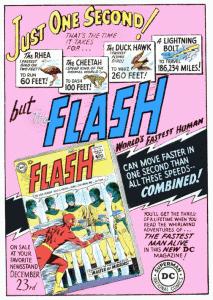
I think Flash #105 value is a bit overstated. It is the fifth appearance of the Flash in the silver age. Many people seem to think Showcase #4 came along and then was followed by Flash #105 and the Silver age of comics took off. It was really better planned than that. DC comics already had a stable of superhero comics that did not go away with the golden age of comics. Superman, Batman & Robin, & Wonder Woman were still being published – not a bad superhero core to start with. In 1956 Showcase #4 featured the all-new Flash Barry Allen. Showcase was being published every two months. Eight months later Showcase #8 was published with the 2nd appearance of the new Flash. It is important to remember that back then sales figures seemed to take forever to obtain. Ten months after issue #8 and armed with sales figures from the first two books they produced the 3rd and 4th appearances of Flash in Showcase #13 & #14. This was followed in the spring of 1959 with the resumption of publishing and Flash #105. DC decided to use a resumption of the old numbering system picking up from Flash Comics that was cancelled at issue #104 in 1949. A mistake they did not repeat going forward. As you can see the return of the Flash was carefully orchestrated ensuring there was reader demand before moving ahead. The three Flash appearances that came after Showcase #4 were instrumental and I would say underappreciated in the successful launch of the new Flash series. It’s hard for me to imagine the launch without them. There is a two-and-a-half-year gap between Showcase #4 and Flash #105.
When I think of the beginnings of the silver age of comics Showcase #4 comes immediately to mind, followed by Brave and the Bold #28 the first appearance of the Justice League of America. It was the success of the Justice League of America that later spurred on Martin Goodman and Stan Lee of Marvel comics to make a copy-cat comic book, that turned out to be the Fantastic Four. The Marvel Universe was born and it helped drive the bus for most of the silver age of comics. Flash#105 did not even need to be published to make that happen. The new Justice League and Flash’s inclusion in the group could have come from his Showcase appearances. Ditto the Green Lantern. Flash #105 and Justice League of America #1 share the exact same value in Overstreet today. I think you can expect the JLA #1 to blow past Flash #105 in value sometime in the near future (in a flash -arrgh).
I’m not a huge fan of the cover of Flash #105 either, which I think is rather ordinary. It is kind of an oddity as I often think of Flash comics with pretty cool covers (like all of the Showcase books).
Flash is a hot property right now and likely will be for the next little while. For me this book has a lot of Green Lantern #76 in it, but on a much larger scale value wise. I hope I have this wrong, after all it is a number #1, and nothing goes wrong with them at Overstreet. Now where did I put my golden age Green Lantern helmet?

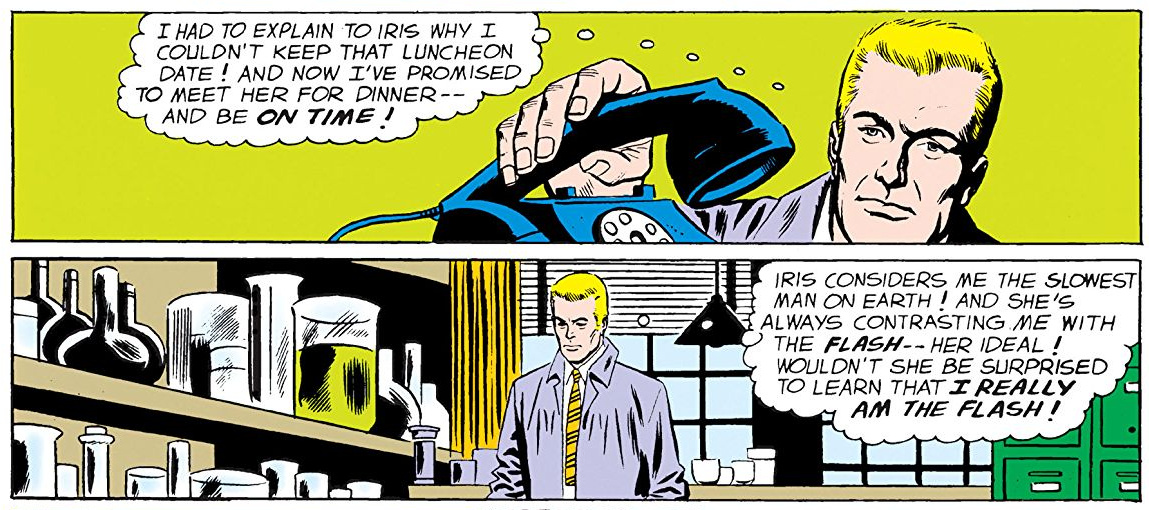
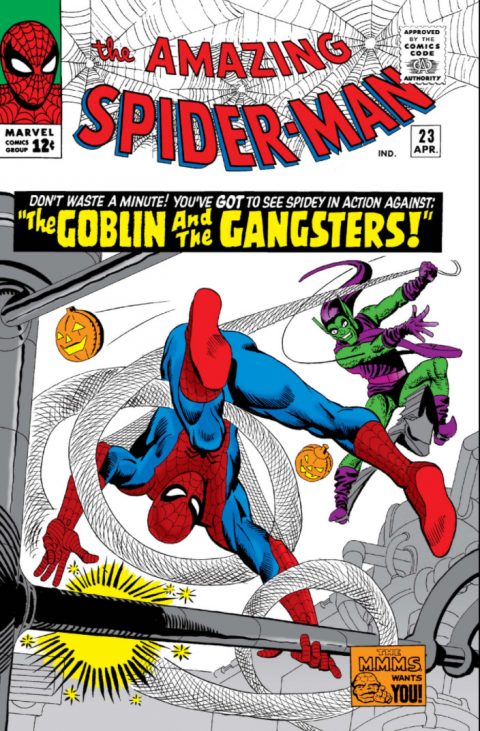
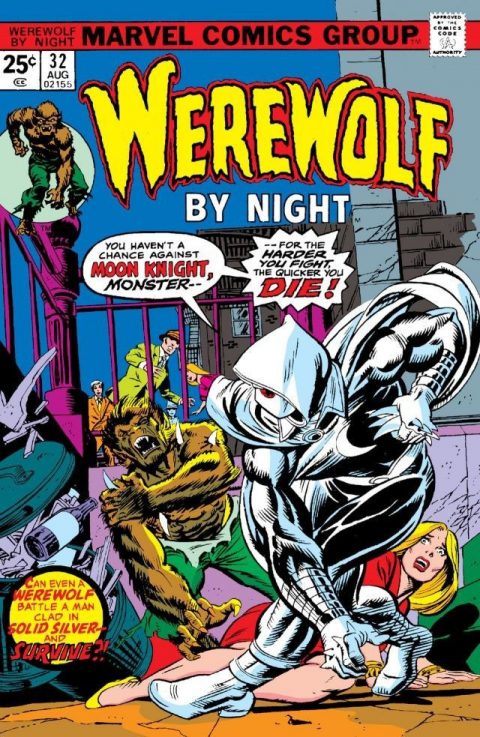
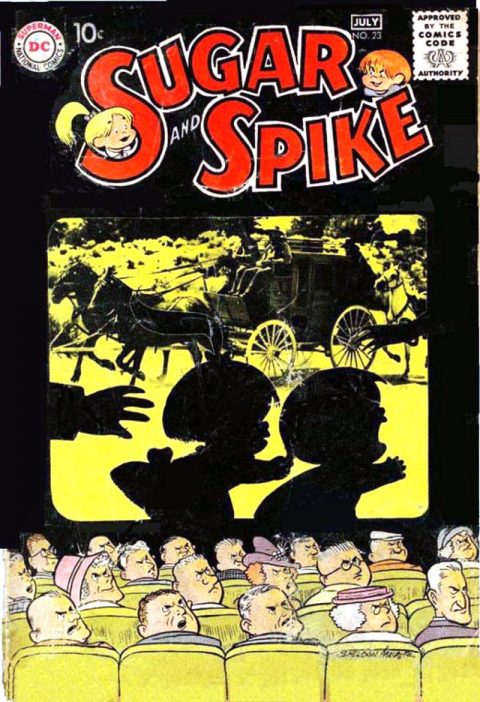
Great article, Mike. (Is “fourty” a Canadian spelling?) I am totally in line with most of your thoughts – BUT. Just like my critique of a prior “Undervalued Spotlight”, I think this article strays from the supposed topic. The topic here really is “relative overvaluation”, in that you are arguing for _why_ Flash #105 should have a particular value. I think “Overvalued Overstreet” should (like say your fairly recent post on FF Annual #1) point out key or semi-key books where Overstreet is clearly too high. In this case it seems pretty clear from GPA that Overstreet is too _low_. A 6.0 sale around $3k this year seems reasonable vs. the $2k guide. (Non-GPA result: ComicLink 6.5 for $4.3k this month.) There was a ComicLink sale of an 8.0 in June for $10.5k vs. the $7k above (which is more like a 2007 price). Finally only three sales fo 9.0s in the past decade in GPA, all $18k+, with the last in 2014 – with the heat of this book, I can’t see it going below this now – versus the $16k above.
I haven’t looked into how _relatively_ low Overstreet is on #105 is on the others in your list, which brings me to my next point – I have pretty much given up on Overstreet. Overstreet at this point generally appears to be a dealer’s guide for valuable books, and a collector’s guide for worthless books. Most books that I am interested sell for multiples of Guide, so why would I even look at it? I think these prices are for dealers to use when buying from ignorant sellers: “I’ll pay 75% of Guide.” On the other hand, all books have “values” in Overstreet, but in fact no dealer/investor will pay more than a tiny fraction of Guide. (If a dealer can afford to offer boxes and boxes of thirty-year-old books for a dollar at conventions and still make a profit, I think we have to conclude that Overstreet should show $1 or less for anything below 9.8 for 80% of the comics listed in the Guide.)
When I first bought an Overstreet Guide close to forty years ago, it was a revelation to me, but now I see it as something of a disservice to the hobby. If you compare it to for example to the “Blue Book” for U.S. Coins, there is a dramatic difference in quality of information. Personally I think that some of this has to do with differences between coin collectors and comic collectors (with the former far more hooked into price versus “value”), but in any case Overstreet’s misleading of less sophisticated collectors can only lead to bitterness towards the hobby. It could be argued that the Guide contains lots of cautionary words (“estimates”, etc. & etc.), but there is a difference between scatter and clearly intentional distortion (even if that distortion is done according to rules stated somewhere in the Guide, or just out of good intention). If the Guide were brought in line with realized prices, even if these were uniformly inflated (say like the “Red Book” for U.S. Coins), I think it would be much better for both buyers and sellers, and would avoid some of the confusion and arguments that some dealers note in their Guide commentary.
Said commentary is the main reason that I buy the guide. This gives me some insight into what dealers are seeing and thinking about, even if they talk their book. (For example, this year there was a great consideration of the efficacy of shipping insurance, with the nugget that the U.S. Postal Service insures purchase price, so good luck if you are shipping a New Mutants #98 that you bought on the newsstand.) I also look through the ads, which gives me a sense of which dealers are becoming more or less aggressive and what they are looking for. As far as the guide content? I barely look at the prices, but I might refer to some notes on some issues, and it is also useful to see how some books are not broken out (yet), even though prices have started to show them as hot/new keys.
Back to Flash #105 and tossing out Overstreet: I generally agree with your thoughts (although I take umbrage at the GL #76 slight, as it is quite possible that if I could keep one comic, it would be that one). Flash #105 seems unexciting to me, just like a rarer version of Hulk #102 – and with a much worse cover. I think it is hard to rank it against Flash Comics #2 and All-Flash #1 simply because these are of a different species, but I can see some argument that it is more desirable as a more “key event” in the reinvigoration of the super hero genre in the early Silver Age than Flash #2 or All-Flash #1 were in the Golden Age. All-Flash #1 (and the title in general) leaves me cold, and it is quite plentiful, but I would take Flash Comics #2 in a heartbeat over Flash #105. There is a core of Golden Age DC books that will continue to ascend, and this is one of them. Relative to Showcase #8? Neck and neck. The significance of #8 is that #4 did so well that a reappearance was warranted – this could be seen as the issue that confirmed the birth of the Silver Age. On the other hand, #105 as the confirmation via a dedicated title has its attractiveness. I’ll make my call based on grade – as #8 is scarcer, I’d rather have a scarce high-grade copy, but in a lower grade, #105 wins (as there will always be people who collect #1s, regardless of grade). I watch #8/#13/#14 and #105 whenever they come up for auction, looking for an entry point (gave up on #4 two years ago…), but I refuse to go crazy over any of these – in my opinion there are many other books in front of them for the current prices. So back to “Undervalued Spotlight”…
Hey Chris,
Fourty eh! I seem to miss a word every post…
Thank you for your well thought out analysis and critique of this post. I wasn’t slagging Green Lantern #76, I like that book too. My problem with Green Lantern #76 is the price escalated too high in Overstreet and is now well above the market price. The guide price has remained stagnate for a few years now. It should have moved down some but Overstreet doesn’t do this often , preferring to leave the price where it is, hoping the market will eventually pick-up. This speaks to some of the disservice that you so eloquently described that the Overstreet price guide provides for comic customers, especially newbies. I believe Flash #105 has a chance to to the same thing.
Thanks again Chris.
Completely understand and agree with the point that this may be an overvalued book. Paying over 25k for the 5th appearance of just about any Silver Age character, especially when you can have the second appearance (with probably a much lower print run) for less, seems a little bit steep in my book.
I guess what this leads me to ask is; how can the Silver Age market be fixed? Especially if buyers are still purchasing for investment purposes.
Further, what books are a bargain for collectors in this atmosphere? I’ve been looking for a while at Brave & the Bold #28, Avengers #4 and Adventure #247 in lower grades. All of them seem relatively affordable in those grades on eBay. From what I can find, it doesn’t seem like Flash #105 is much cheaper in the online marketplace than those books. Should I take the leap because these seem like good investments (Though, I am not planning on breaking up my Silver Age and older collection anytime soon)?
Hi Tim,
What to buy today? Well I think you hit the nail on the head yourself Tim. Quality books, like the one’s you have listed in the best grade you can afford, Justice League #1 and early appearances of that title. Charlie Kim mentioned these books in his last post, and Charlie has a knack for picking what might become hot. I personally look at books or titles that seem to be out of favour (like Fantastic Four) and try and find high grade examples of books I couldn’t afford just a short while ago with some sort of first appearance (FF#18 first Super Skrull is an example). Two books I am very wary of in that group are FF#45 & #52 who I think are also over-hyped/over-heated right now.
I’m probably not helping you much ^-^! Tim the best advice I can give you is buy and invest in what you like, in the best grade you can afford, and you won’t go too far wrong.
Thanks for commenting Tim.
Thanks for the shout out Mike. BTW, I’ve been trying to email you but they’re all bouncing back, with an error message that your inbox is full. I’m not sure if you’ve received any of them.
I think the trick to buying comics is to be purposeful. Understand why you’re buying something and follow through with this thinking or plan. It’s difficult because we are emotional creatures and ultimately, collecting is an emotional sport.
I like “key” books that no one is talking about. The worst case scenario is that these books remain flat. They may turn out not to have been a great investment but at least you enjoyed them and haven’t lost ground financially. But books that are overly hyped will also have inflated prices. For these books, get in early or wait it out. But don’t wait too long because the world only moves forward. If you keep looking back or wait on the side lines, life will pass you by. Add to that inflation, the overall trend for comics is to keep going up.
Philosophy and comics ^_^
I feel like Charlie but I think this approach could be questioned by looking at objective results. I am suspicious of certain newly hot books, but I think that other continually hot books (such as the ubiquitous Amazing Spider-Man #300) can feed on themselves, and become books everybody “has” to own. So you might be “waiting it out” for a very long time. On the other hand people might not be talking about those “key” books for a long time. There has been a lot of discussion about FF #1 on this site, and that’s maybe a good example of one of the keys that you might be sitting with while other books appreciate more quickly. I think Charlie is right that these “cold keys” tend to have good downside protection, but as with many 1960s Marvels, sitting for a decade with no appreciation is a bad outcome – if you had invested in other assets or some other books, you could now buy twice as many of those 1960s Marvels with that appreciation.
My focus is on two fronts: reinvigorated or possible new keys and scarcity. By “reinvigorated” I think I mean the same thing as Charlie – a key that has been weak for a reason, or simply because of fashion. One example is Showcase #22 a couple of years ago – unless you believed that the GL movie was going to kill interest in GL forever, its relative pricing seemed out of whack. It was possible that it wouldn’t tick up, but it seemed really unlikely that it would continue to weaken. So far good outcome. On the scarcity side, I am focused on immediately pre-code/post-code books in decent grades, as many of these are very scarce, but their pricing is very attractive relative to more plentiful books from the 1940s.
Regarding Tim’s three mentioned books, my preference would be B&B #28, but I keep looking for an entry point on this and failing – the book seems to price just beyond my range each time. Avengers #4 seems to be solid but unexciting – there are just too many of these out there for my taste. (I am generally very picky about any Marvels after 1962 – same for the core DC titles.) I personally just don’t get Adventure #247 – it fits my bill for early SA DC key, but the Legion has a few qualities that make me question it as a place to park a few thousand dollars. Adventure #247 might be “affordable” in low grades on eBay right now, but the asking prices all look way too high to me – my read would be to aim for about 200% of 2011 levels, where generally the eBay ask looks more like 300-400%.
Thanks for joining in Charlie. Yes something is wrong with my in-box again. Hope to get it fixed on Thursday – I have not been receiving any messages from anybody since last Friday.
Chris I really had to bite my tongue when you were talking about Flash #2 last week and you can see why on today’s Undervalued Spotlight. I too would love to own a copy of that book.
I enjoy listening to both as you as your tied a lot tighter to the investor side of the market than I am. I am also certain others like hearing your view points here as well. They will always be welcome here.